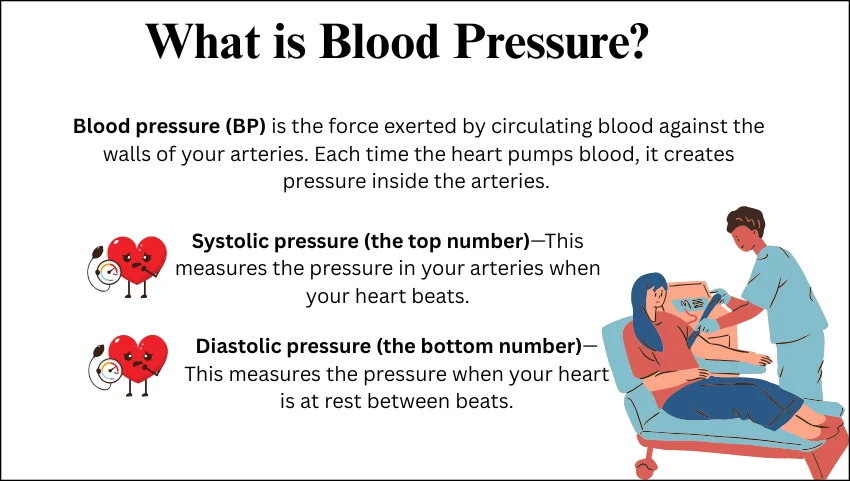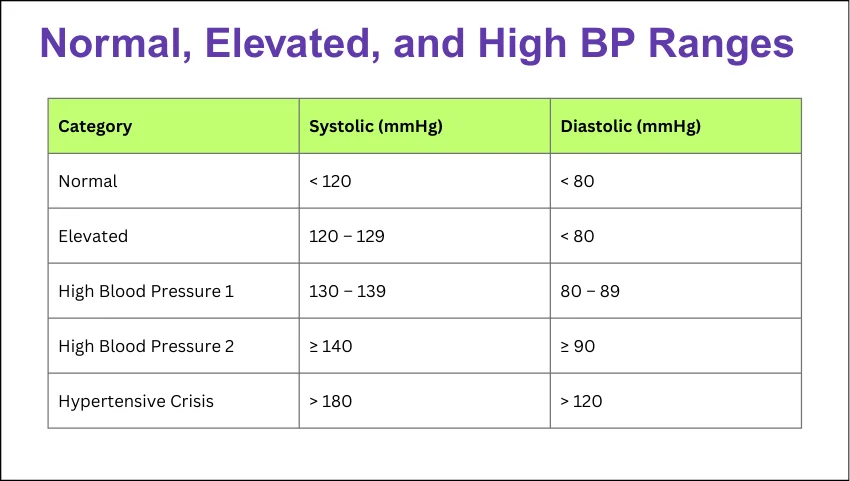Average Blood Pressure Calculator
How to Use:
Enter multiple blood pressure readings to calculate your average. Take readings at different times for the most accurate average. The calculator will also determine your Mean Arterial Pressure (MAP) and blood pressure category.
Blood pressure is one of the most important indicators of overall health. Doctors often check it during routine check-ups because it provides vital insights about your heart, arteries, and circulation system. Many people hear terms like “normal blood pressure” or “average BP,” but not everyone fully understands what those numbers mean. In this article, we will explore what average BP is, how it is calculated, and how an Average BP Calculator can help you easily estimate and monitor your blood pressure.
What is Blood Pressure?
Blood pressure (BP) is the force exerted by circulating blood against the walls of your arteries. Each time the heart pumps blood, it creates pressure inside the arteries. Blood pressure is typically expressed as two numbers:

- Systolic pressure (the top number)—This measures the pressure in your arteries when your heart beats.
- Diastolic pressure (the bottom number)—This measures the pressure when your heart is at rest between beats.
For example, a blood pressure reading of 120/80 mmHg means:
- Systolic = 120
- Diastolic = 80
What is Average BP?
Average BP simply refers to the mean value of multiple blood pressure readings taken over a period of time. Since blood pressure varies throughout the day depending on activity, stress, and other factors, a single reading might not accurately reflect your usual BP.
By calculating the average of several readings, you get a more reliable estimate of your true blood pressure.
For example:
- Reading 1: 120/80
- Reading 2: 125/82
- Reading 3: 118/78
Average BP: 121/80 mmHg
Why is Average BP Important?
Monitoring average BP is important because it helps:
- Diagnose hypertension (high blood pressure): If multiple readings are consistently high, you may need medical attention.
- Prevent heart disease and stroke: High BP is a major risk factor for heart attacks, strokes, and kidney problems.
- Track treatment effectiveness: If you’re taking medication, averaging your readings can show whether your treatment is working.
- Reduce false alarms: A single high reading may be caused by temporary stress or activity. Average values are more reliable.
According to the American Heart Association (AHA), normal BP should be below 120/80 mmHg. Anything consistently higher may indicate hypertension.
What is an Average BP Calculator?
An Average BP Calculator is a simple tool that allows you to enter multiple blood pressure readings and instantly see the average systolic and diastolic values. It saves time, reduces errors, and helps you track your readings over days, weeks, or months.
Instead of manually calculating averages, you just enter your data and let the calculator do the math.
Key Features of an Average BP Calculator:
- Easy input fields for systolic and diastolic readings
- Option to enter multiple readings
- Instant calculation of mean systolic and diastolic BP
- Clear output for better understanding
- Works online for free
How to Calculate Average BP Manually
To calculate average BP manually, follow these steps:
- Write down multiple readings.
Example:- 120/80
- 125/84
- 118/78
- Add the systolic values together and divide by the number of readings.
(120+125+118)÷3=121 - Add the diastolic values together and divide by the number of readings.
(80+84+78)÷3=80.6 (≈81) - Combine the averages.
Average BP = 121/81 mmHg
While this method is straightforward, it becomes time-consuming when you have lots of data. That’s where an online average BP calculator comes in handy.
Who Should Use an Average BP Calculator?
This tool is useful for:
- Hypertension patients monitoring daily values
- Diabetic patients who need to track health risks
- Elderly individuals with cardiovascular concerns
- Fitness enthusiasts tracking progress
- Doctors and nurses for patient record maintenance
Normal, Elevated, and High BP Ranges
Here’s a quick chart (based on AHA guidelines) to understand the normal and risky ranges:

| Category | Systolic (mmHg) | Diastolic (mmHg) |
|---|---|---|
| Normal | < 120 | < 80 |
| Elevated | 120 – 129 | < 80 |
| High Blood Pressure 1 | 130 – 139 | 80 – 89 |
| High Blood Pressure 2 | ≥ 140 | ≥ 90 |
| Hypertensive Crisis | > 180 | > 120 |
If your average BP readings frequently cross into the elevated or high range, consult a healthcare professional immediately.
Benefits of Using an Average BP Calculator
- Saves time compared to manual calculation
- Reduces error in averaging values
- Tracks progress over time
- Simple to use for all age groups
- Free and accessible on most devices
Tips for Accurate BP Measurement
To get correct readings before entering values into the calculator:
- Sit calmly for at least 5 minutes before measuring.
- Place the cuff on the upper arm at heart level.
- Ensure feet are flat on the ground.
- Avoid caffeine, exercise, or smoking 30 minutes prior.
- Take multiple readings (morning and night) for better accuracy.
Lifestyle Changes to Maintain Normal BP
In addition to tracking your average BP, adopting healthy habits can keep your numbers within the normal range:
- Eat a balanced diet – Focus on fruits, vegetables, whole grains, and lean proteins.
- Reduce salt intake – Excess sodium raises BP.
- Stay active – At least 30 minutes of exercise daily.
- Limit alcohol and caffeine.
- Quit smoking.
- Manage stress with relaxation techniques like yoga, meditation, or deep breathing.
Common Questions About Average BP
How many readings should I take to calculate average BP?
At least 2–3 readings a day over a week are recommended for accurate results.
Can I rely only on online calculators?
They are helpful, but always consult your doctor for a professional evaluation.
What if my average BP is high?
Consult a healthcare provider immediately. Do not self-medicate.
What is considered a healthy average BP?
A healthy average BP is below 120/80 mmHg.
Can stress impact average BP values?
Yes, stress can raise readings. Multiple measurements at calm times give a more accurate average.
Conclusion
Monitoring blood pressure regularly is one of the smartest steps you can take toward better health. An Average BP Calculator makes it easy to track your systolic and diastolic readings over time, providing a clearer picture than individual readings.
It is important to remember:
- Normal BP should be below 120/80 mmHg.
- Consistently high readings may indicate risk and require a doctor’s assessment.
- Lifestyle changes like exercise, diet, and relaxation play a big role in maintaining healthy BP.
By calculating and monitoring your average BP, you can effectively manage your health and take preventive action against hypertension and related diseases.
